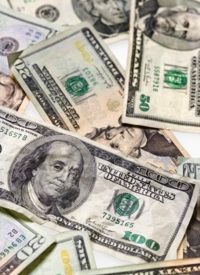
So says the Congressional Budget Office in its latest analysis of Obama's fiscal 2012 budget.
Federal debt held by the public is that debt, according to the Government Accounting Office, "held by all investors outside of the federal government, including individuals, corporations, state or local governments, the Federal Reserve banking system, and foreign governments."
It is separate from the debt held in government accounts, such as Social Security and Medicare. Totaled, the two equal the entire federal debt, which is now $14.2 trillion.
GAO did not estimate what the total federal debt would be in 2020, but it will be more than $20 trillion, with federal debt held by the public composing most of it.
Staggering Numbers
The GAO's analysis paints a grim picture of the profilgate spending and what its results will be.
In 2012, the deficit under the President’s budget would decline to $1.2 trillion, or 7.4 percent of GDP, CBO estimates. That shortfall is $83 billion greater than the deficit that CBO projects for 2012 in its current baseline. Deficits in succeeding years under the President’s proposals would be smaller than the deficit in 2012, although they would still add significantly to federal debt. The deficit would shrink to 4.1 percent of GDP by 2015 but widen in later years, reaching 4.9 percent of GDP in 2021.
In all, deficits would total $9.5 trillion between 2012 and 2021 under the President’s budget (or 4.8 percent of total GDP projected for that period) — $2.7 trillion more than the cumulative deficit in CBO’s baseline. Federal debt held by the public would double under the President’s budget, growing from $10.4 trillion (69 percent of GDP) at the end of 2011 to $20.8 trillion (87 percent of GDP) at the end of 2021.
CBO is not sanguine about the prospects of the United States avoiding a fiscal crisis of the kind now affecting Greece. In December, the agency warned that the continued accumulation of massive debt will eventually precipitate a major financial meltdown.
Higher debt would increase the likelihood of a fiscal crisis, in which investors would lose confidence in the government’s ability to manage its budget and the government would thereby lose its ability to borrow at affordable interest rates.
Nothing New
Yet the CBO's analysis is barely news. As The New American has reported in recent weeks, spending and debt are rocketing out of control and have reached the point they cannot be paid off.
In February, the Obama Administration set another record for the monthly federal budget deficit, when expenditures exceeded revenues by $223 billion. That same month, the government added $63.7 billion to the national debt.
As well, such is this administration's profligacy that it increased the average debt per American household by $30,000 in its first two years of control of the purse strings. Debt per household is now more htan $125,000.
The total federal debt — the debt held by the public ($9.6 trillion) plus the intragovernmental debt ($4.6 trillion)— is $14.2 trillion. It is impossible for the government to pay that debt off because it exceeds all the assets in the United States.
The federal government's unfunded liabilities, which include Social Security, Medicare and the prescription drug plan, exceed $100 trillion, or $1 million per taxpayer.



